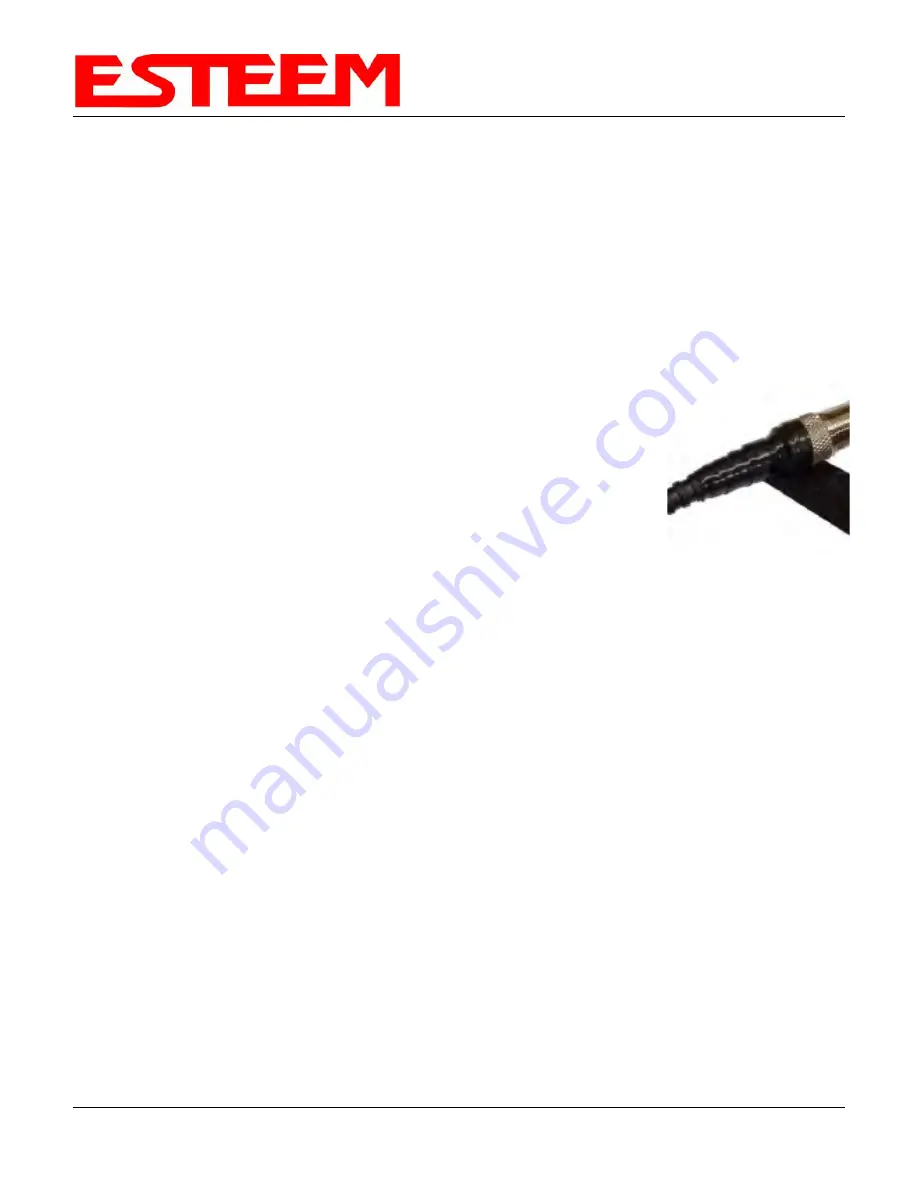
CHAPTER 8
ANTENNA SETUPS
Revised: 10 Mar 16
8-2
EST P/N AA107-Horizon
WEATHER PROOFING COAX CONNECTIONS
1.
Lightly coat the threads of the connectors with silicone lubricant prior to assembly (See Note 1) and hand
tighten. Make sure to use the silicon sparingly so when assembled, any excess does not get on center
conductor. Care should be taken not to get any lubricant on the center conductor.
2.
Wrap the connector assembly with a non-adhesive silicone tape, EST part number AA243, for weather proofing
(See Note 2 and instructions below).
a) Clean surface to be wrapped. Cut off length to be used.
b) Peel back a short length of protective film. Keep tape clean and dry.
c) Begin with one complete overlap of tape onto itself.
d) STRETCH CoaxWrap while continuing to wrap object with “half-laps”, removing clear film as you go (Figure
1). For greater pressure resistance, use 2 or more tightly wrapped layers.
e) End of tape at final wrap should be completely positioned onto itself.
Note: CoaxWrap’s bond begins to cure immediately upon contact with itself.
Repositioning or removal is not recommended after 2 minutes of wrapping.
3.
Apply an electrical coating (sealing agent), over the vapor barrier patch for added
protection (See Note 3).
NOTES:
1. Dow Corning RTV-3140 or equivalent.
2. CoaxWrap, CW10B or equivalent.
3. SCOTCHKOTE, 3-M Company, or equivalent.
ANTENNA DIVERSITY
The dual diversity antenna configuration on the ESTeem Model 216An allows the radio to operate more efficiently in
areas with high reflections (such as indoors or in a city) without direct line of sight (LOS) between the antennas. One
of the most difficult conditions to control in a radio system is the effect of a destructive reflected radio signal called
mutipathing. Multipathing occurs when waves emitted by the transmitter travel along a different path and interfere
destructively with waves traveling on a direct line-of-site path. The phenomenon occurs because waves traveling along
different paths may be completely out of phase when they reach the antenna, thereby canceling each other out. The
dual diversity antenna configuration places a physical distance between the antennas where one reflected signal will be
out of phase, but the second will be not. The ESTeem Model 216An will sample both antennas and select the best
receive signal.
Figure 1: Installation Example






























